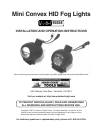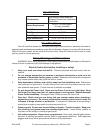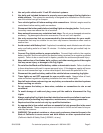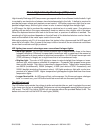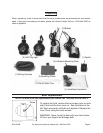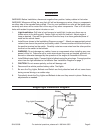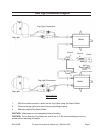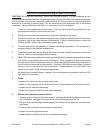
SKU 95058 For technical questions, please call 1-800-444-3353 Page 4
About High Intensity Discharge (HID) Lamps
High Intensity Discharge (HID) lamps use a gas capsule rather than a filament inside the bulb. Light
is created by an electrical arc between two electrodes sealed in the bulb. A ballast is required to
provide the proper voltage and maintain current control. HID bulbs create more light than a com-
parable halogen lamp, and the light is closer in color to natural daylight than halogen light.
In HID lamps, the light is produced by creating an electrical arc in a metal vapor. Free electrons
colliding with an atom in the vapor momentarily knock an electron into a higher orbit of the atom.
When the displaced electron falls back to its former level, a quantum of radiation is emitted. The
wavelength of light produced depends on the shell level of the disturbed electron and on the ele-
ment and ionization of the metal vapor used in the arc tube.
Although producing only 5% of its output when first ignited, after a few seconds the HID lamp will
come up to full output. Also, if power to the lamp is lost or turned off, the arc tube must cool before
the arc can be restruck and light produced.
HID lighting has several advantages over conventional halogen lights:
More light output. An HID light source produces light at approximately three to five times
halogen’s efficiency. Efficiency is measured in lumens per watt, a measure of the amount of
light produced for a given amount of electrical consumption. An HID lamp’s lumens per watt
(LPW) efficiency is roughly six to eight times that of an incandescent lamp.
Brighter light. The color of HID lighting is closer to natural daylight than halogen or incan-
descent light, which appear yellowish in comparison. Florescent light appears more green
than natural daylight. Light color is described in degrees Kelvin. Typical color temperatures
are 2800K (incandescent), 3000K (halogen), 4100K (cool white or SP41 fluorescent), and
5000K (daylight-simulating fluorescent colors). HID lights produce a light with a color tem-
perature at or above 5000K. Higher temperature lights appear brighter and bluer than lower
temperature lights.
Longer Service Life. An HID lamp will last, on the average, 3 to 5 times as long as a halogen
bulb. In normal use, your HID bulb should last more than one thousand ignitions.
The HID ballast unit
The HID ballast unit provides the voltage to strike and maintain the arc, and it regulates the current
to the lamp once the arc is established. Ballasts are not interchangeable among different types of
HID lamps. The HID Fog Lights (95058) will not operate without the provided Ballast Units. The
ballast units are built into the HID Off-road Lights (95059).
•
•
•



